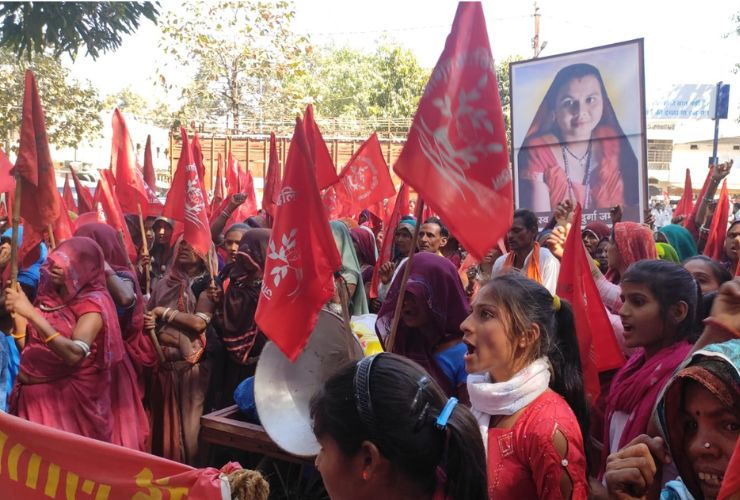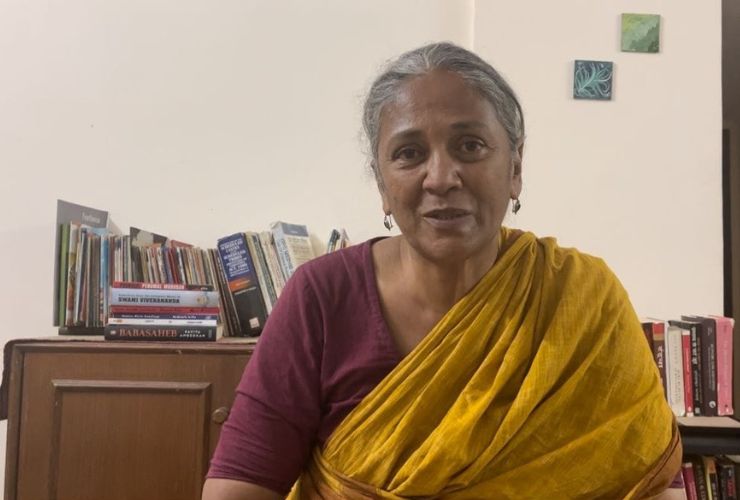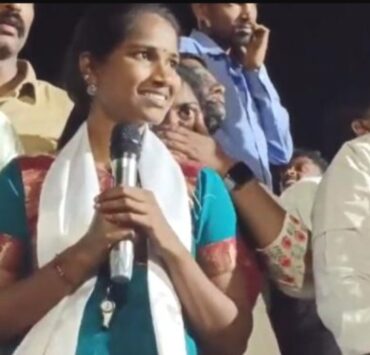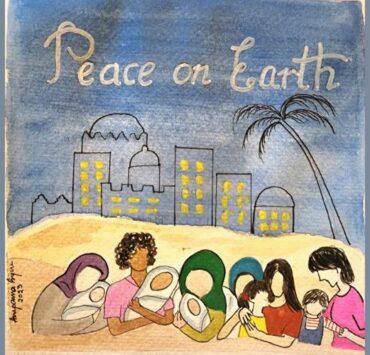
By Ritwika Mitra

Madhuri is an activist with the Madhya Pradesh-based Jagrit Adivasi Dalit Sangathan, a collective working for the rights of Dalits and Adivasis in the state. She spoke to NWMI ahead of the state election results about the struggles of Adivasis, large-scale distress migration from villages, and how political parties treat people as voters and not citizens.
This interview has been edited for length and clarity.
Can you talk about your work in Madhya Pradesh and the changing political landscape in the state?
I started working in southwestern Madhya Pradesh around 1996. Earlier, the tribal communities were relatively autonomous. There was a strong sense of bonding among them, and they would resolve their own disputes, using a clear set of rules acceptable to both parties. For instance, you would not find any destitute Adivasis asking for alms — if there was no food in a household, it was taken for granted that others would help out. Over the years, as market penetration has grown, the community has become fragmented, and the economic situation has worsened despite the work provided under MGNREGA (Mahatma Gandhi National Rural Employment Guarantee Act, 2005), and their efforts through the Forest Rights Act, 2006, to reclaim the land they lost.
This has led to widespread distress migration among the Adivasis and also to fragmentation of the community.
Our organisation started by addressing the violence faced by the forest dependent communities from forest officials and other government officials, and from exploitative traders. While that violence subsided, the systemic violence – the poverty and exploitation of Adivasi communities – continues.
Adivasis are increasingly becoming a part of the unorganised sector. Work in the villages centred around MGNREGA was fairly successful till the Modi government came into power. But even before 2014, the state wanted people to migrate. Distress migration is driving the capitalist economy and fuelling urbanisation. People driven out of villages are becoming vulnerable to bonded labour. The government does not want people to have a life of dignity in their villages. They want a pool of desperate workers.
It has been an uphill battle for us. We are a non-funded organisation and our activists are members of the community. They are willing to work even as they struggle to survive. They manage to take time out to fight a collective battle to secure their right to live with dignity. We periodically go to the community and ask if they still need the organisation. Every time, there is a resounding “Yes!” in reply, strengthening our resolve to make it grow.
Has there been an erasure of Adivasi culture over the years?
The Adivasis had a distinct religion and deity. In the past 20 years, as part of a politically driven agenda, there has been a conscious effort by the Bharatiya Janata Party to “Hinduise” the community. This has helped the Rashtriya Swayamsevak Sangh make inroads into Adivasi communities. The Adivasis have taken to some Hindu festivals but not with any awareness of the original Hindu beliefs. This, coupled with distress migration, has led to the erasure of the Adivasis: people are being driven out of the villages and losing their culture that involved community practices and kept them together.

Can you talk about the shifting economy, and how it has affected Adivasi women?
In traditional Adivasi societies, agricultural decisions were taken by both men and women. Once the market took control, women were pushed out of decision-making. Today, when they become migrant labourers in a male-dominated society, they face harassment from all men, from sub-contractors to owners. They are helpless against sexual violence. The push towards privatisation of the educational system has largely destroyed the existing education system. And as schools are privatised, a family will invest in sending only one child to school.
In any society, it is the women who bear the brunt whenever there is out-migration. This is not only because of the traditional double workload that women typically face in working at home and in the field. That was bad enough. But with distress migration, women are finding themselves in situations of bonded or semi-bonded labour, working for long hours with only a few hours of sleep. They have to do this for the family to survive. When there is less food, women have to go without it. Women are also extremely vulnerable to sexual violence in these situations.
There have been reports of Adivasi women being excluded from accessing government schemes. What is the impact of government schemes on Adivasi women?
People find it difficult to access many of the schemes. For instance, many women have not received the money promised under the Ladli Behna (an income support scheme for women). Also, many schemes, especially after 2014, demand a huge amount of paperwork. Women from remote villages have to come to the block headquarters and queue up outside the bank to access them. So, these schemes are often a headache. There are also many scams and thefts in their implementation.
The discourse is also extremely patriarchal: while single women are not given money under the scheme, women in families (married, divorced or widowed) are. In most families, the money is not controlled by women, but by heads of the families. It is telling that single women are excluded from the schemes.
In any case, these schemes will not have an impact on the Adivasi community’s voting patterns.
The election results will also be skewed, as thousands of Adivasi families have migrated to Maharashtra, Karnataka, Telangana and Gujarat. Among these families are several who did not migrate in previous years but were forced to do so this year due to complete crop failure. People in other states have found it difficult to come back. Of course, both the parties have brought back people who they think are their vote banks. But this is piecemeal.
This is also an extremely cynical approach. For the current government, people are just voters, and not citizens. Nobody is asking the important questions: Why are our voters not there? Why are our villages empty? There is a lot of despair and resentment in many villages. What exactly is citizenship in free India when people cannot exercise their right to vote because they are unable to stay in their villages?
Whichever way the election results go, Adivasis are aware that their condition is worsening.
Ritwika Mitra is an independent journalist.
Edited by Sandhya Srinivasan




